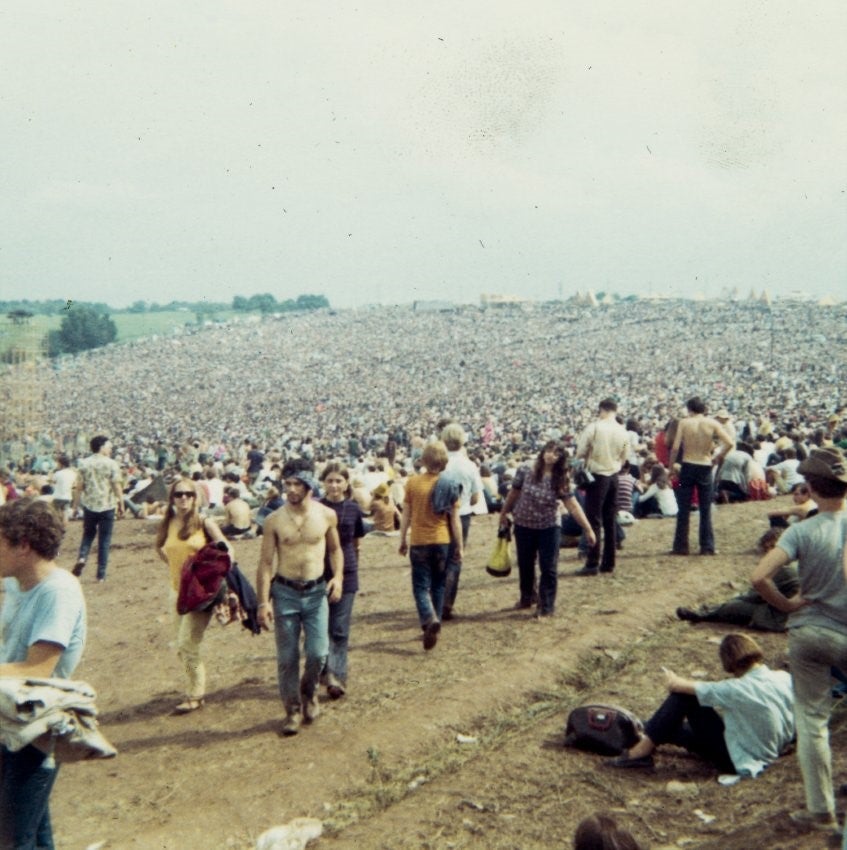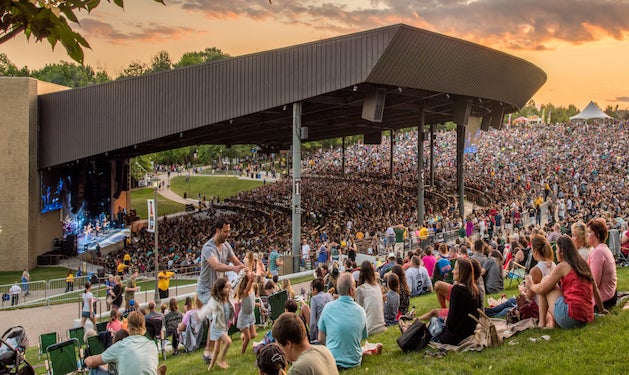Jarrett Hill reflects on his oral history internship with the museum at Bethel Woods, and the connections that music can make through generations, languages, and landscapes.
It's been less than a month since I started my internship with the Museum at Bethel Woods, during which I've been transcribing new oral histories. In this short time, I've already been privy to many profoundly sweet stories from members of the community that the Museum serves. I'm not even physically on-site at the Museum (my internship is entirely remote). Yet, I can feel the strength of Bethel's gravitational pull and how it unifies people from various backgrounds and life experiences.
Each interview exudes its sweetness that I can't express when transcribed. The nuance of tone and body language can get lost, but the purity of Woodstock's effect on its fans and admirers is overwhelming. It satisfies a yearning for a community I rarely have the opportunity to engage in 2022.

(photo by Elizabeth Alexander, BW Collection)
The Museum's preservation of the original festival site has fulfilled a dream for many people who were distanced from Woodstock in August 1969 by time, space, or both. The Museum provides the opportunity for individuals to experience their pilgrimage to the site, which parallels the journey taken by original attendees over 50 years ago. For some, this pilgrimage crosses not just state or county lines but international boundaries.
Although the event of Woodstock is iconic to American history, the emotions and values it represents are universal: harmony, love, and community. Woodstock was, above all, a practice of existing and interacting with a diverse array of fellow human beings and, ultimately, sharing the human experience. Over 60 individuals shared their memories, thoughts, and feelings about the festival during the Museum's pop-up oral history program this summer.
As I worked on the transcriptions, it became clear that music was a major conduit for international fans/devotees of this communal love fest. Justino, who was 15 when he and his friends watched the 1970 Woodstock documentary in Puerto Rico, says of the music, "Even if you don't understand what is being said in the songs, you feel it in your heart." When people listen and move to music together, the actual words cease to matter because the feel of it and the listening experience is what carries its meaning.
Adan Mondragon Nieto came to the States from Mexico and visited Bethel this summer with his wife, Daisy. Adan, who held a much-loved copy of the Woodstock album in his lap for the duration of the interview, has been in awe of the festival since he was a child. Despite speaking little English (Daisy helped facilitate translations), the music is what Adan emphasizes as the root of his adoration. When asked to speak on the importance of Woodstock to him as someone who was not in America, Adan responds, "The space and the history. Love the music. My love for the music. . . The Who, Santana… Santana is my neighbor in Mexico. Joe Cocker, Joe Cocker always. Joan Baez, Ten Years After, Creedence Clearwater Revival."
Maybe I am so moved by these international interviewees because I feel a sense of pride that I've rarely felt in my home country in the midst of increasing social divide and political polarization.
Modern interpersonal divisiveness makes feeling connected more of a struggle. This pride, I feel, is specific to the music produced in America during the mid-20th century and its ubiquitous relevance to people from all over the world.
Although music seems to be the throughline to Woodstock's international impact, American literature has also sparked inspiration. Francis Dumaurier, who came from France the week of Woodstock, got his degree in American Studies and wrote his thesis on Jack Kerouac and the Beat Generation. I can relate to that because it reflects my obsession with British music and culture—my current thesis research is on John Lennon. Seeing this specific feeling reflected to me by people who feel the same way about art made in America deepens my feeling of pride.
Woodstock has become a symbol for the American youth of the 1960s and '70s. The attendees came together over a love of music, and it turned into a cathartic opportunity to practice love and community values. This demographic of late 1960s youth had the freedom to express themselves and the freedom to advocate for a different way of life. This freedom was reflected and amplified by the universally potent music of the festival that traveled across international borders and connected with individuals outside of the American bubble.
For international Woodstock devotees, visiting its original site in Bethel fulfills their long-term desire to take part in the festival's legacy. The Museum at Bethel Woods offers the opportunity to be immersed in the site's energy that remains after 53 years.
